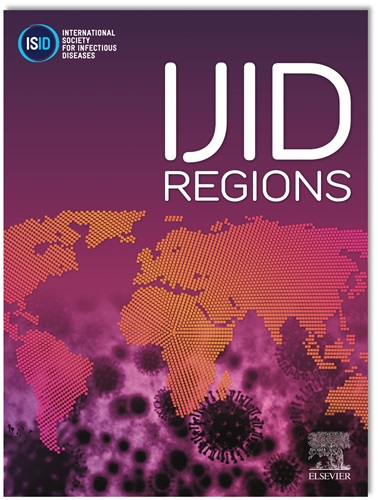Estimating the effect of COVID-19 vaccination and prior infection on cycle threshold values as a proxy of SARS-CoV-2 viral load
IF 4.8
2区 医学
Q1 INFECTIOUS DISEASES
引用次数: 0
Abstract
Objectives
SARS-CoV-2 viral load could be an important parameter for transmission potential. Here, we use quantitative reverse transcription-polymerase chain reaction cycle threshold (Ct) values as a proxy for viral load. We assess the effect of COVID-19 vaccination and prior infection status on Ct value while accounting for the virus variant.
Methods
Using Dutch SARS-CoV-2 community testing data (n = 409,925 samples) from 8 March 2021 to 31 December 2022, separate univariable linear regressions were conducted for each explanatory variable, including age, sex, testing date, variant of infection, time since symptom onset, and testing laboratory. Subsequently, causal inference analysis assessed the impact of prior infection and vaccination status on Ct values, employing inverse propensity score weighting to adjust for confounders.
Results
Our findings revealed a negative correlation between age and Ct values. Additionally, we observed modest differences in Ct values between different variants of infection, with lower Ct values (indicative of higher viral load) noted for Omicron variants compared to earlier variants. In addition, our results indicated an increase in Ct value (lower viral load) with prior infection. Conversely, the impact of vaccination was less pronounced.
Conclusions
We observed an association between prior infection status and higher Ct values, suggesting a decrease in viral load, which could possibly indicate lower transmissibility.
估计COVID-19疫苗接种和既往感染对Ct值的影响,作为SARS-CoV-2病毒载量的代理。
目的:SARS-CoV-2病毒载量可能是传播潜力的重要参数。在这里,我们使用RT-qPCR周期阈值(Ct)值作为病毒载量的代理。我们评估了COVID-19疫苗接种和既往感染状况对Ct值的影响,同时考虑了病毒变异。方法:利用荷兰2021年3月8日至2022年12月31日SARS-CoV-2社区检测数据(n = 409,925份样本),对年龄、性别、检测日期、感染变异、症状出现时间和检测实验室等解释变量进行单独的单变量线性回归。随后,因果推理分析评估了既往感染和疫苗接种状况对Ct值的影响,采用逆倾向评分加权来调整混杂因素。结果:年龄与Ct值呈负相关。此外,我们观察到不同感染变异之间Ct值的适度差异,与早期变异相比,Omicron变异的Ct值较低(表明病毒载量较高)。此外,我们的结果表明,Ct值增加(较低的病毒载量)与先前的感染。相反,疫苗接种的影响不那么明显。结论:我们观察到先前感染状态与较高Ct值之间的关联,表明病毒载量降低,这可能表明较低的传播性。
本文章由计算机程序翻译,如有差异,请以英文原文为准。
求助全文
约1分钟内获得全文
求助全文
来源期刊
CiteScore
18.90
自引率
2.40%
发文量
1020
审稿时长
30 days
期刊介绍:
International Journal of Infectious Diseases (IJID)
Publisher: International Society for Infectious Diseases
Publication Frequency: Monthly
Type: Peer-reviewed, Open Access
Scope:
Publishes original clinical and laboratory-based research.
Reports clinical trials, reviews, and some case reports.
Focuses on epidemiology, clinical diagnosis, treatment, and control of infectious diseases.
Emphasizes diseases common in under-resourced countries.

 求助内容:
求助内容: 应助结果提醒方式:
应助结果提醒方式:


